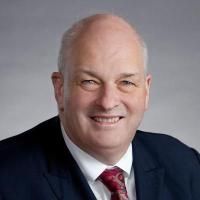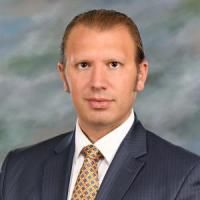The Incremental Clinical Benefit of Adding Layers of Complexity to the Planning and Execution of Adult Spinal Deformity Corrective Surgery.
Date
2024-05
Journal Title
Journal ISSN
Volume Title
Repository Usage Stats
views
downloads
Citation Stats
Abstract
Background and objectives
For patients with surgical adult spinal deformity (ASD), our understanding of alignment has evolved, especially in the last 20 years. Determination of optimal restoration of alignment and spinal shape has been increasingly studied, yet the assessment of how these alignment schematics have incrementally added benefit to outcomes remains to be evaluated.Methods
Patients with ASD with baseline and 2-year were included, classified by 4 alignment measures: Scoliosis Research Society (SRS)-Schwab, Age-Adjusted, Roussouly, and Global Alignment and Proportion (GAP). The incremental benefits of alignment schemas were assessed in chronological order as our understanding of optimal alignment progressed. Alignment was considered improved from baseline based on SRS-Schwab 0 or decrease in severity, Age-Adjusted ideal match, Roussouly current (based on sacral slope) matching theoretical (pelvic incidence-based), and decrease in proportion. Patients separated into 4 first improving in SRS-Schwab at 2-year, second Schwab improvement and matching Age-Adjusted, third two prior with Roussouly, and fourth improvement in all four. Comparison was accomplished with means comparison tests and χ2 analyses.Results
Sevenhundredthirty-two. patients met inclusion. SRS-Schwab BL: pelvic incidence-lumbar lordosis mismatch (++:32.9%), sagittal vertical axis (++: 23%), pelvic tilt (++:24.6%). 640 (87.4%) met criteria for first, 517 (70.6%) second, 176 (24%) third, and 55 (7.5%) fourth. The addition of Roussouly (third) resulted in lower rates of mechanical complications and proximal junctional kyphosis (48.3%) and higher rates of meeting minimal clinically important difference (MCID) for physical component summary and SRS-Mental (P < .05) compared with the second. Fourth compared with the third had higher rates of MCID for ODI (44.2% vs third: 28.3%, P = .011) and SRS-Appearance (70.6% vs 44.8%, P < .001). Mechanical complications and proximal junctional kyphosis were lower with the addition of Roussouly (P = .024), while the addition of GAP had higher rates of meeting MCID for SRS-22 Appearance (P = .002) and Oswestry Disability Index (P = .085).Conclusion
Our evaluation of the incremental benefit that alignment schemas have provided in ASD corrective surgery suggests that the addition of Roussouly provided the greatest reduction in mechanical complications, while the incorporation of GAP provided the most significant improvement in patient-reported outcomes.Type
Department
Description
Provenance
Subjects
Citation
Permalink
Published Version (Please cite this version)
Publication Info
Pierce, Katherine E, Jamshaid M Mir, Pooja Dave, Renaud Lafage, Virginie Lafage, Paul Park, Pierce Nunley, Gregory Mundis, et al. (2024). The Incremental Clinical Benefit of Adding Layers of Complexity to the Planning and Execution of Adult Spinal Deformity Corrective Surgery. Operative neurosurgery (Hagerstown, Md.). 10.1227/ons.0000000000001192 Retrieved from https://hdl.handle.net/10161/31202.
This is constructed from limited available data and may be imprecise. To cite this article, please review & use the official citation provided by the journal.
Collections
Scholars@Duke

Christopher Ignatius Shaffrey
I have more than 25 years of experience treating patients of all ages with spinal disorders. I have had an interest in the management of spinal disorders since starting my medical education. I performed residencies in both orthopaedic surgery and neurosurgery to gain a comprehensive understanding of the entire range of spinal disorders. My goal has been to find innovative ways to manage the range of spinal conditions, straightforward to complex. I have a focus on managing patients with complex spinal disorders. My patient evaluation and management philosophy is to provide engaged, compassionate care that focuses on providing the simplest and least aggressive treatment option for a particular condition. In many cases, non-operative treatment options exist to improve a patient’s symptoms. I have been actively engaged in clinical research to find the best ways to manage spinal disorders in order to achieve better results with fewer complications.

Peter Passias
Throughout my medical career, I have remained dedicated to improving my patients' quality of life. As a specialist in adult cervical and spinal deformity surgery, I understand the significant impact our interventions have on individuals suffering from debilitating pain and physical and mental health challenges. Spinal deformity surgery merges the complexities of spinal biomechanics with the needs of an aging population. My research focuses on spinal alignment, biomechanics, innovative surgical techniques, and health economics to ensure value-based care that enhances patient outcomes.
Unless otherwise indicated, scholarly articles published by Duke faculty members are made available here with a CC-BY-NC (Creative Commons Attribution Non-Commercial) license, as enabled by the Duke Open Access Policy. If you wish to use the materials in ways not already permitted under CC-BY-NC, please consult the copyright owner. Other materials are made available here through the author’s grant of a non-exclusive license to make their work openly accessible.
